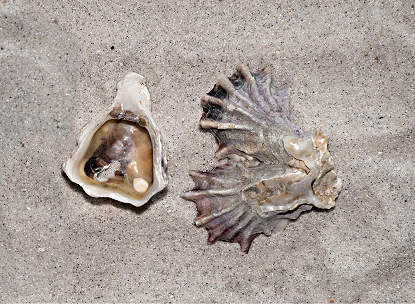
Isognomon alatus
The flat tree oyster’s color is pale brownish to purplish black with a shiny cream interior. The shell has a long hinge line. It is a very thin bivalve and can be easily confused with a jingle shell. Although many shells found are small, they can grow to 3 inches.
Its habitat is in areas of high sedimentation. It is often found in dense patches on Red Mangrove roots where they attach themselves with secretions of byssal threads. The Flat Tree Oyster feeds by passing seawater through its gills, filtering out plankton and other organic particles.
In the spring, changes in water temperature, salinity, and food supply trigger mass spawning. They simultaneously release their egg and sperm cells into the water where the eggs are fertilized and the larvae float with plankton for a couple of weeks.
Flat Tree Oysters have been used to determine if heavy metal pollution has occurred in certain areas. Since their bodies readily absorb impurities, analyzing them can determine the amount of toxins in the water.
Live shells should never be taken from any Florida State Park.